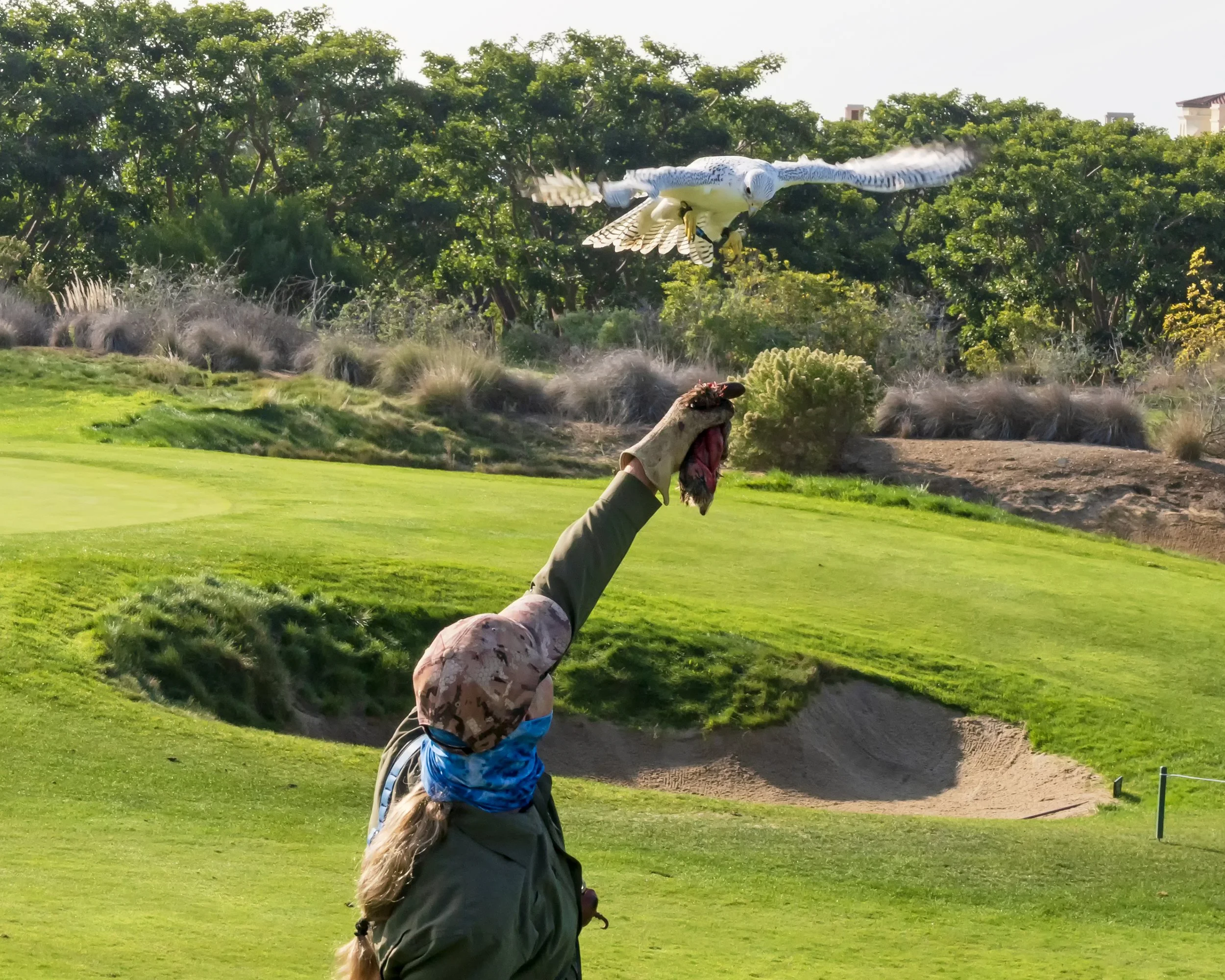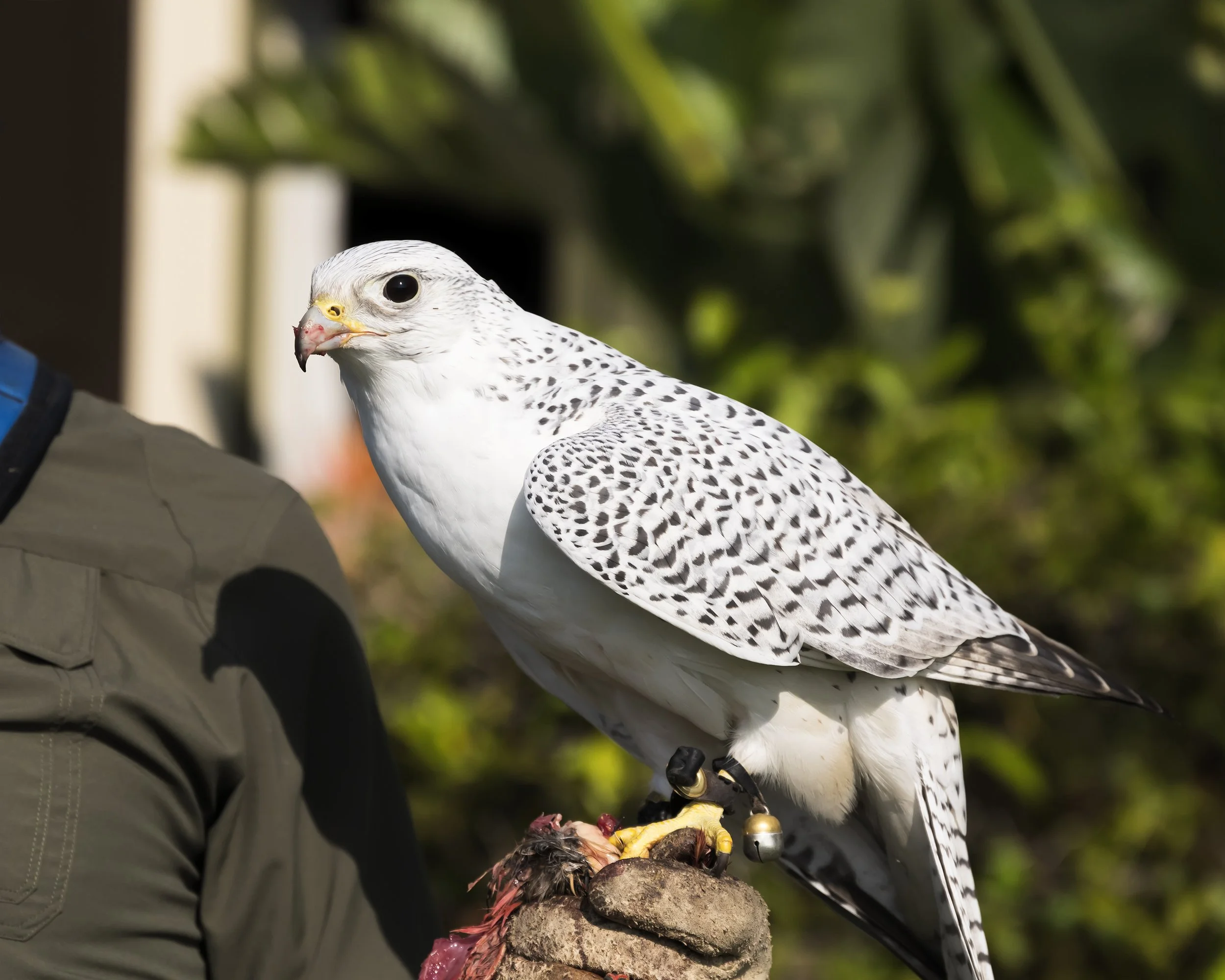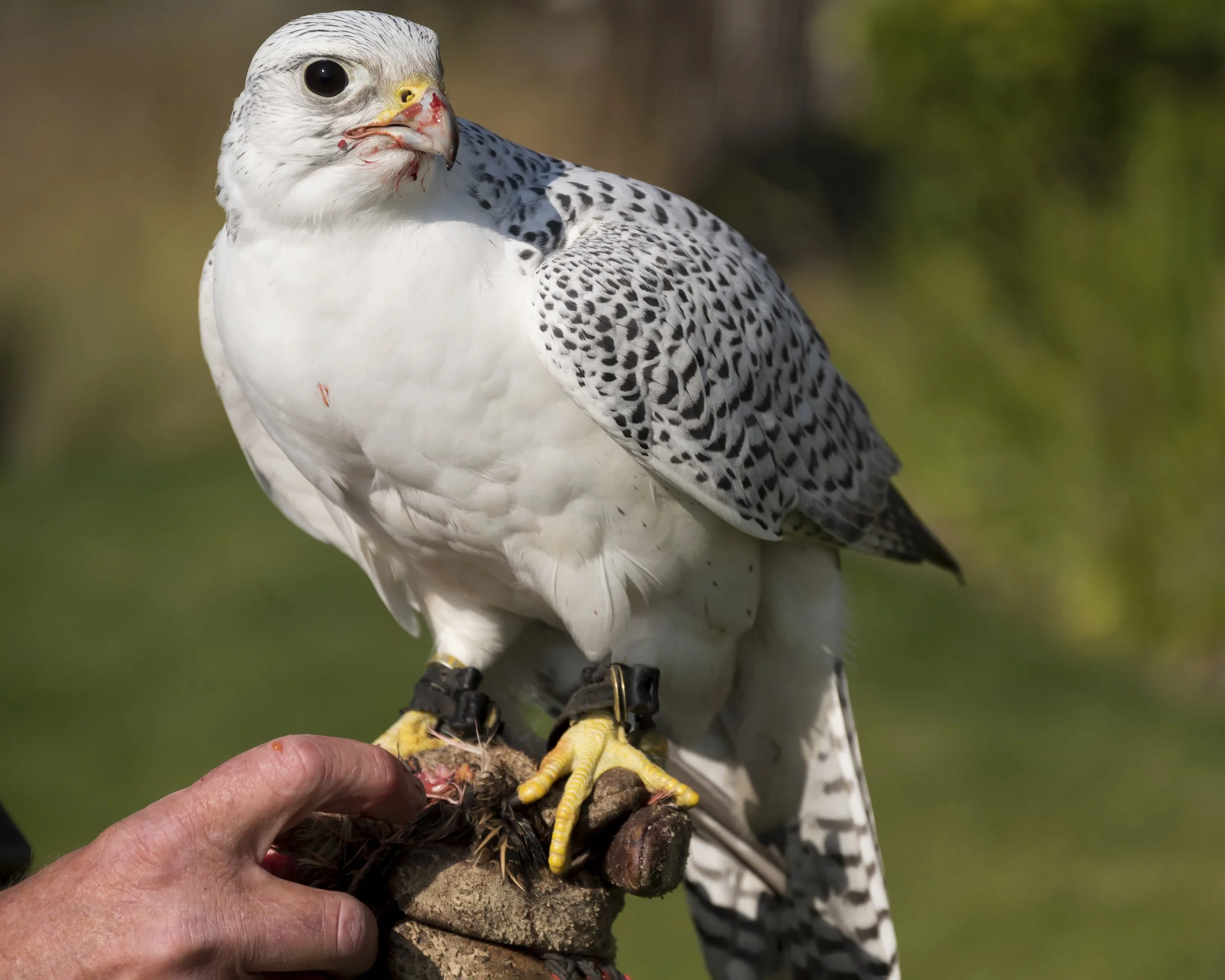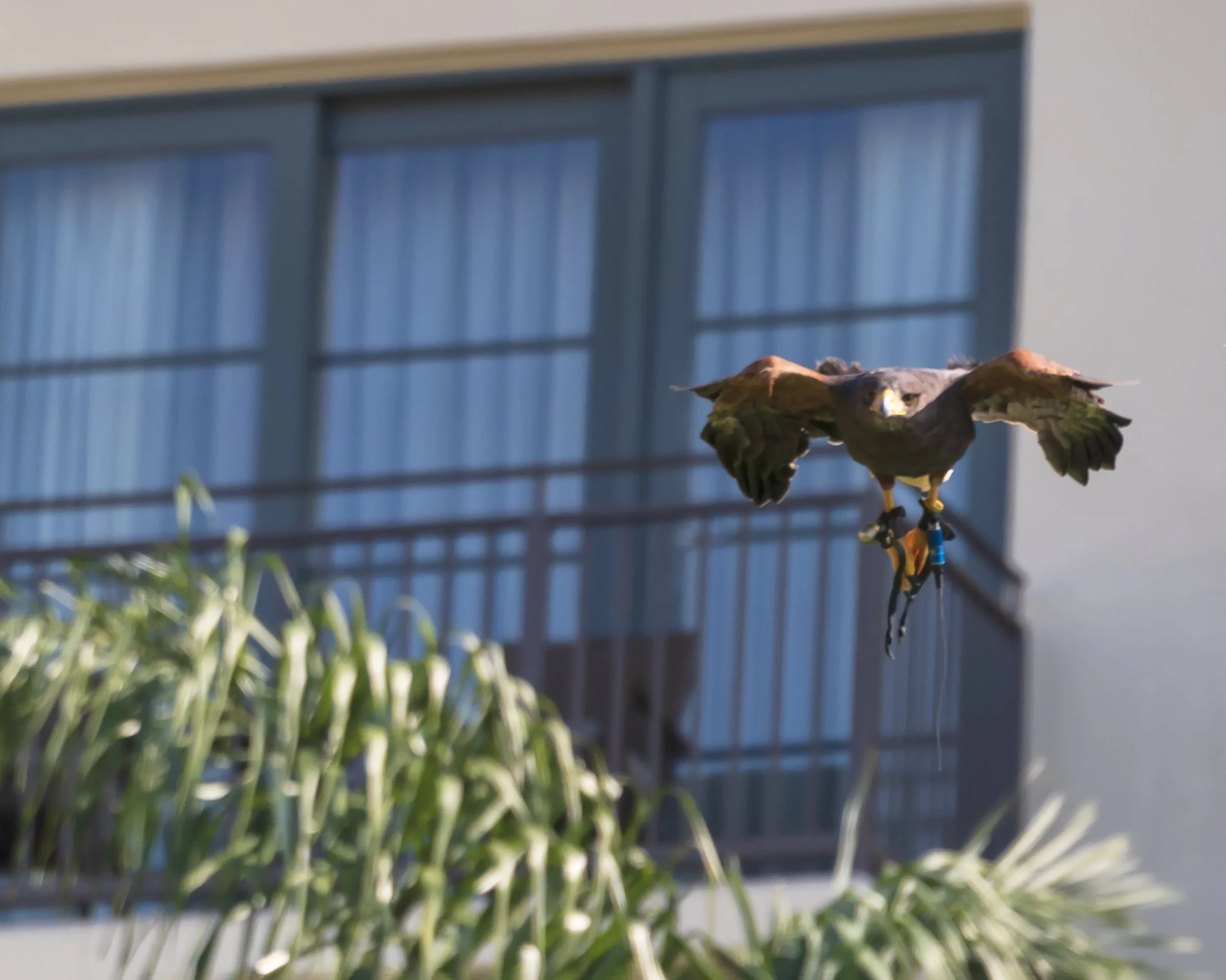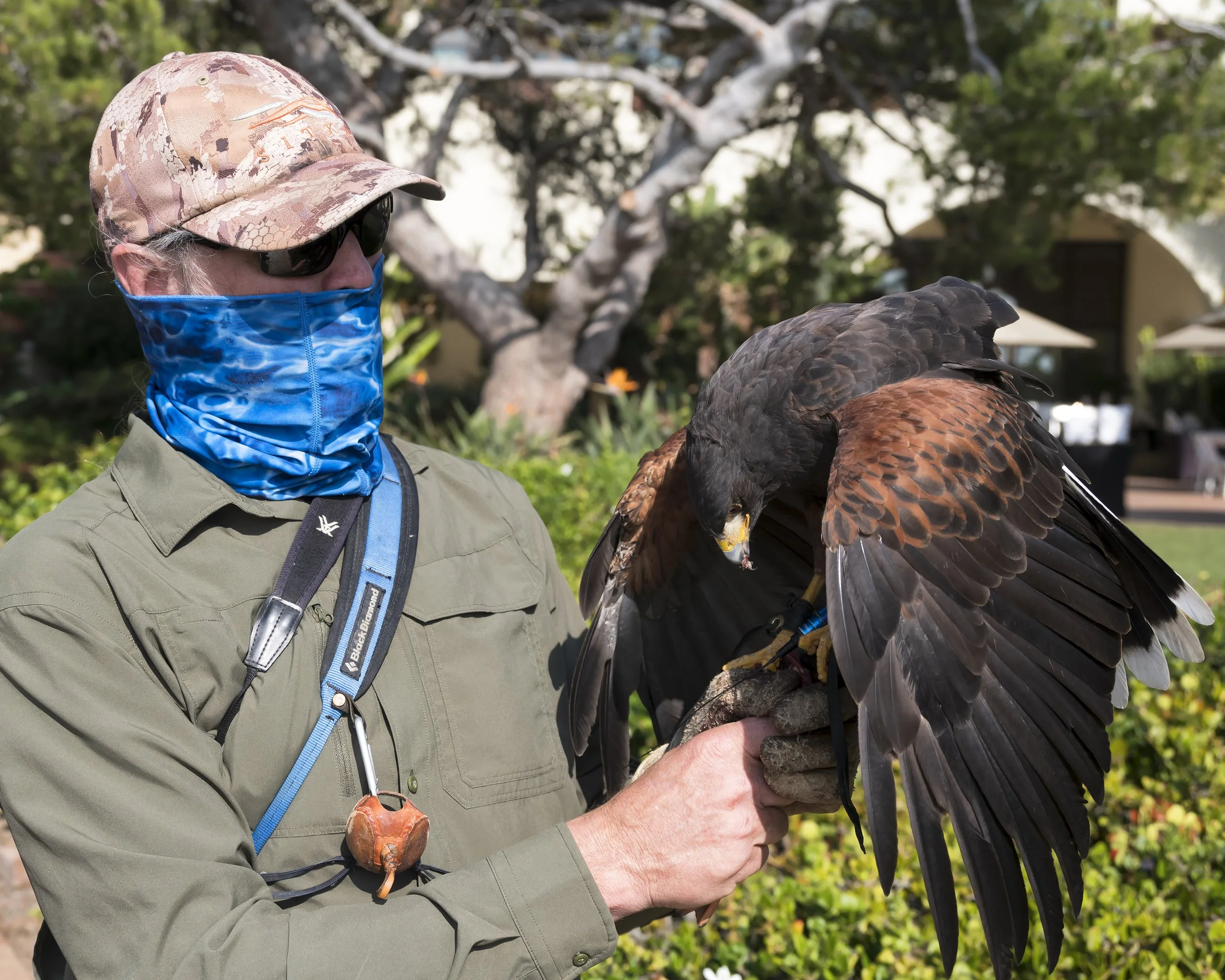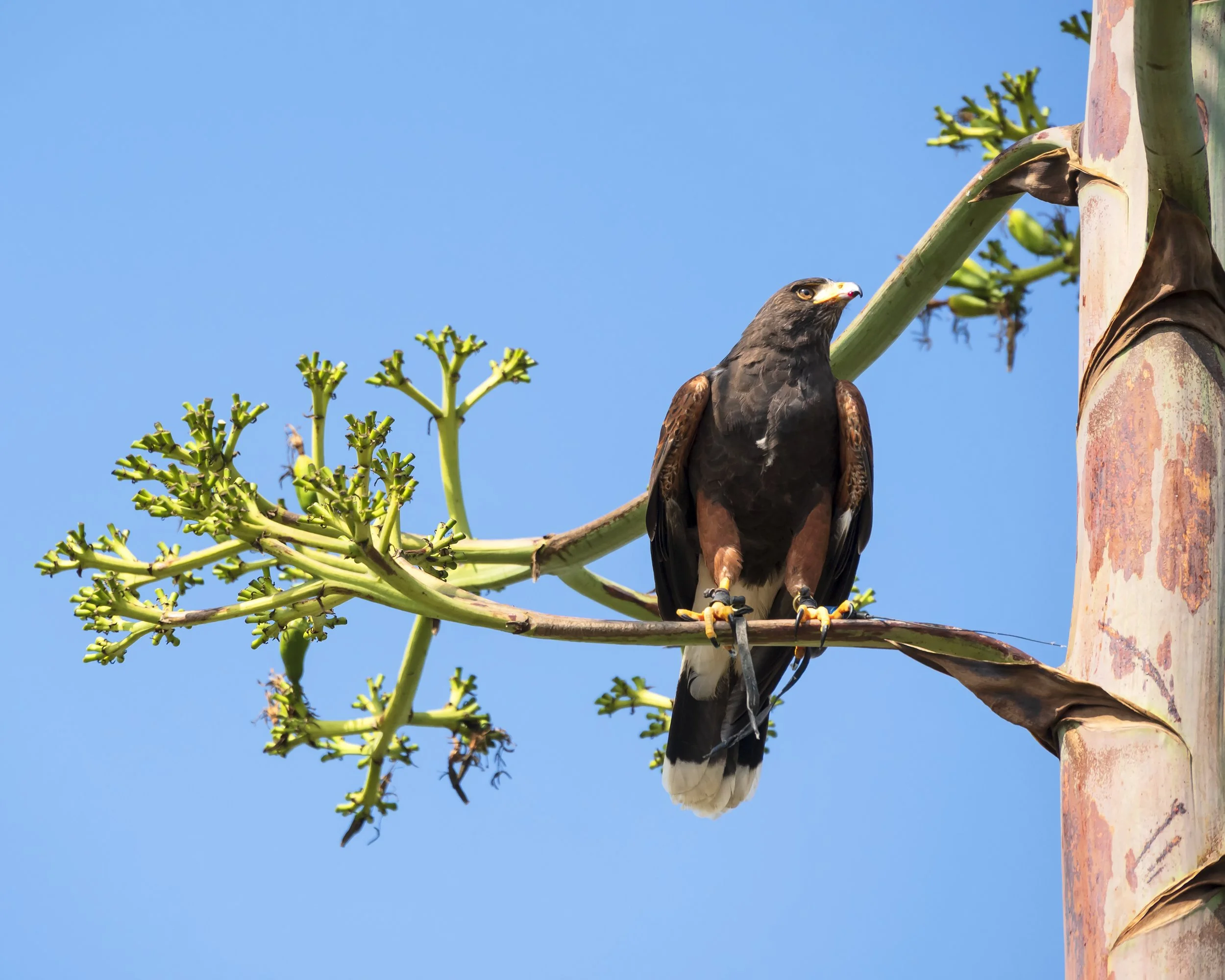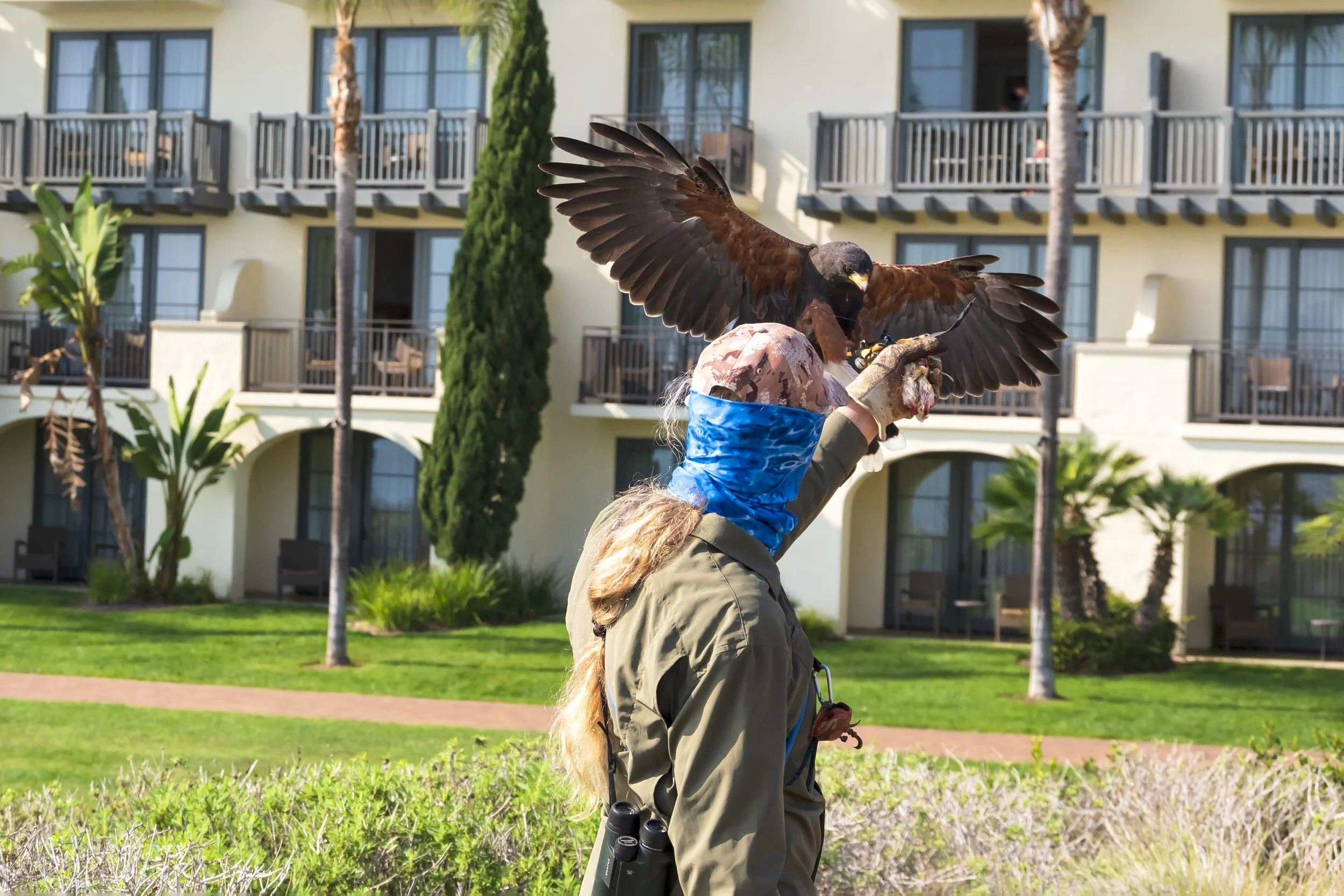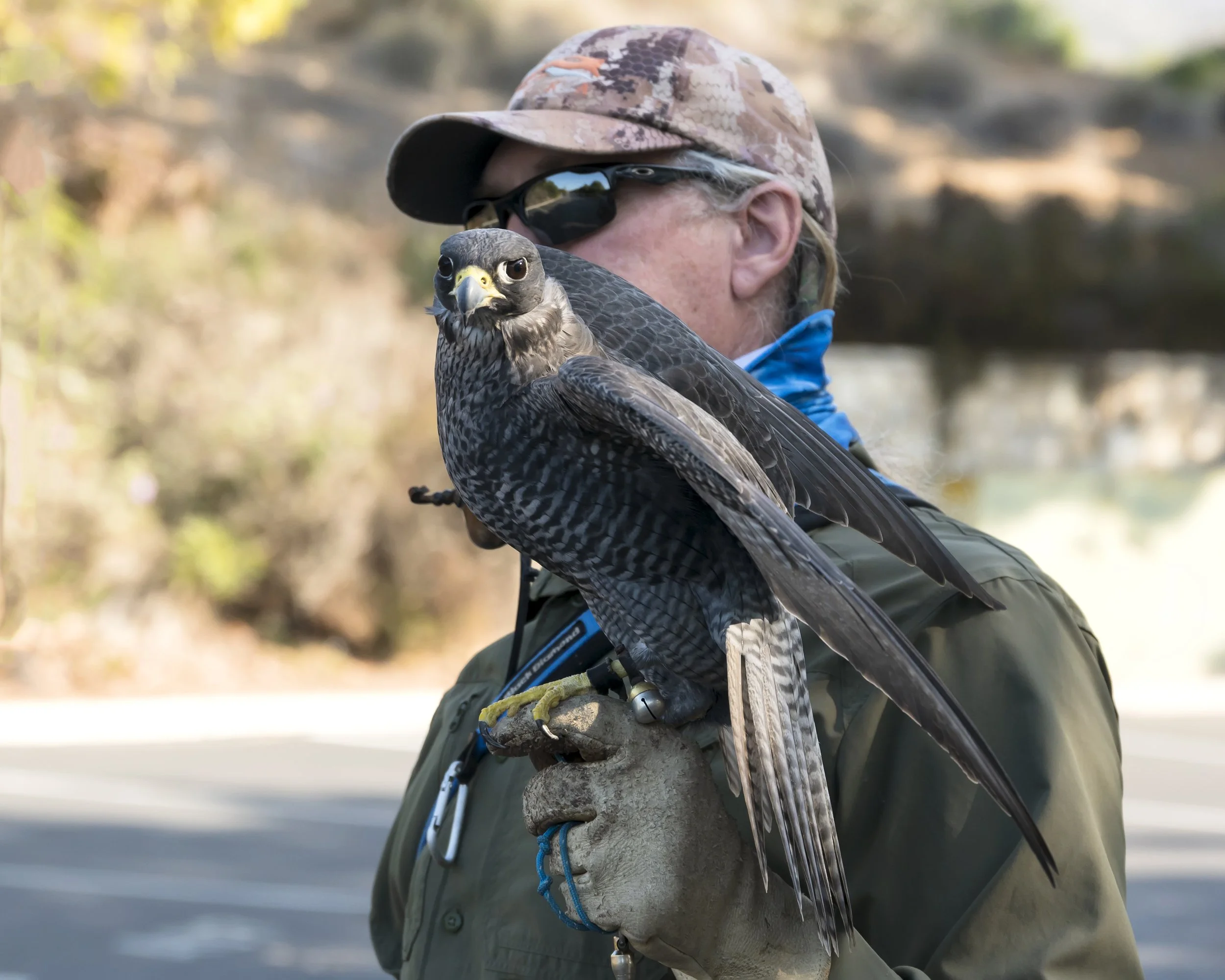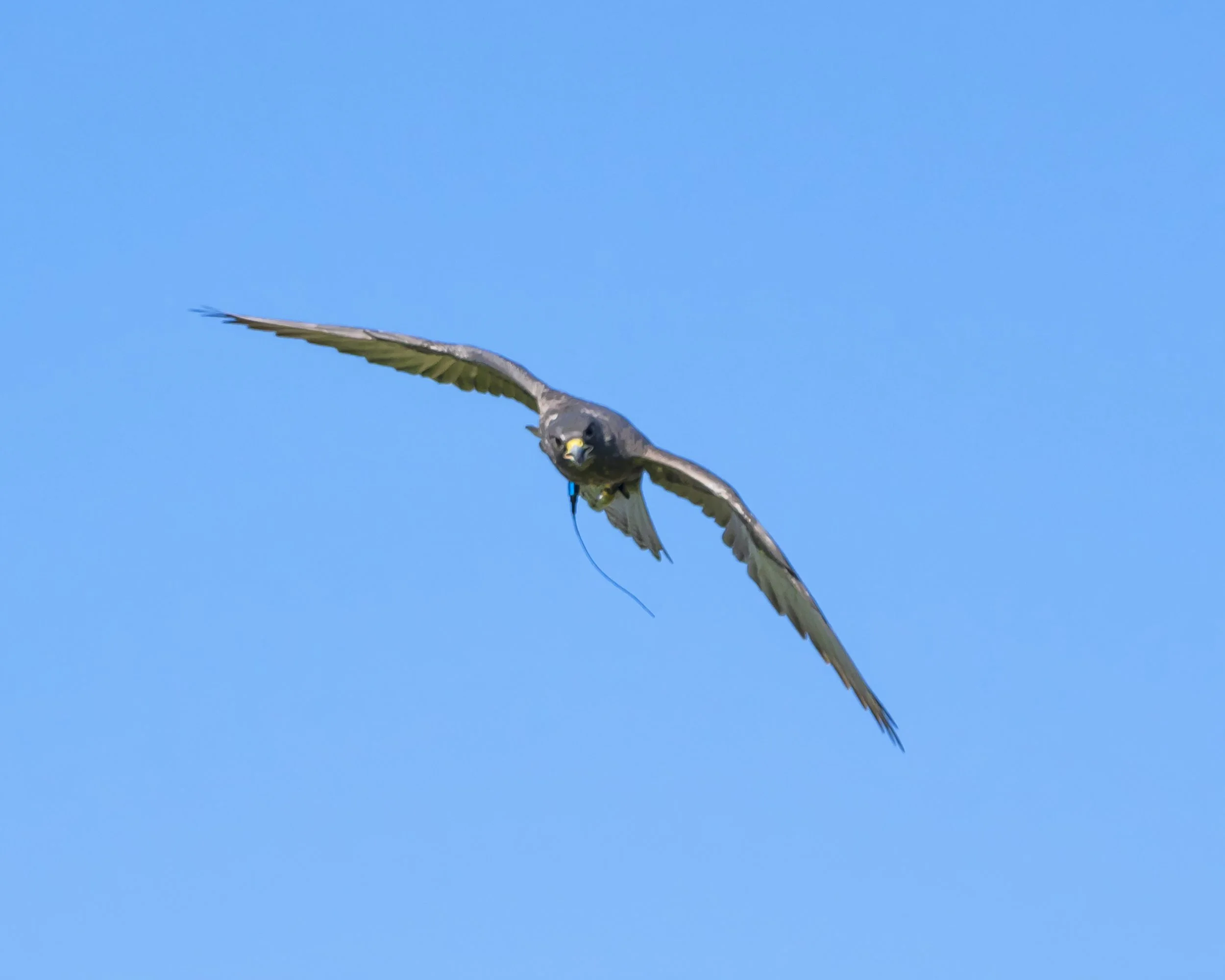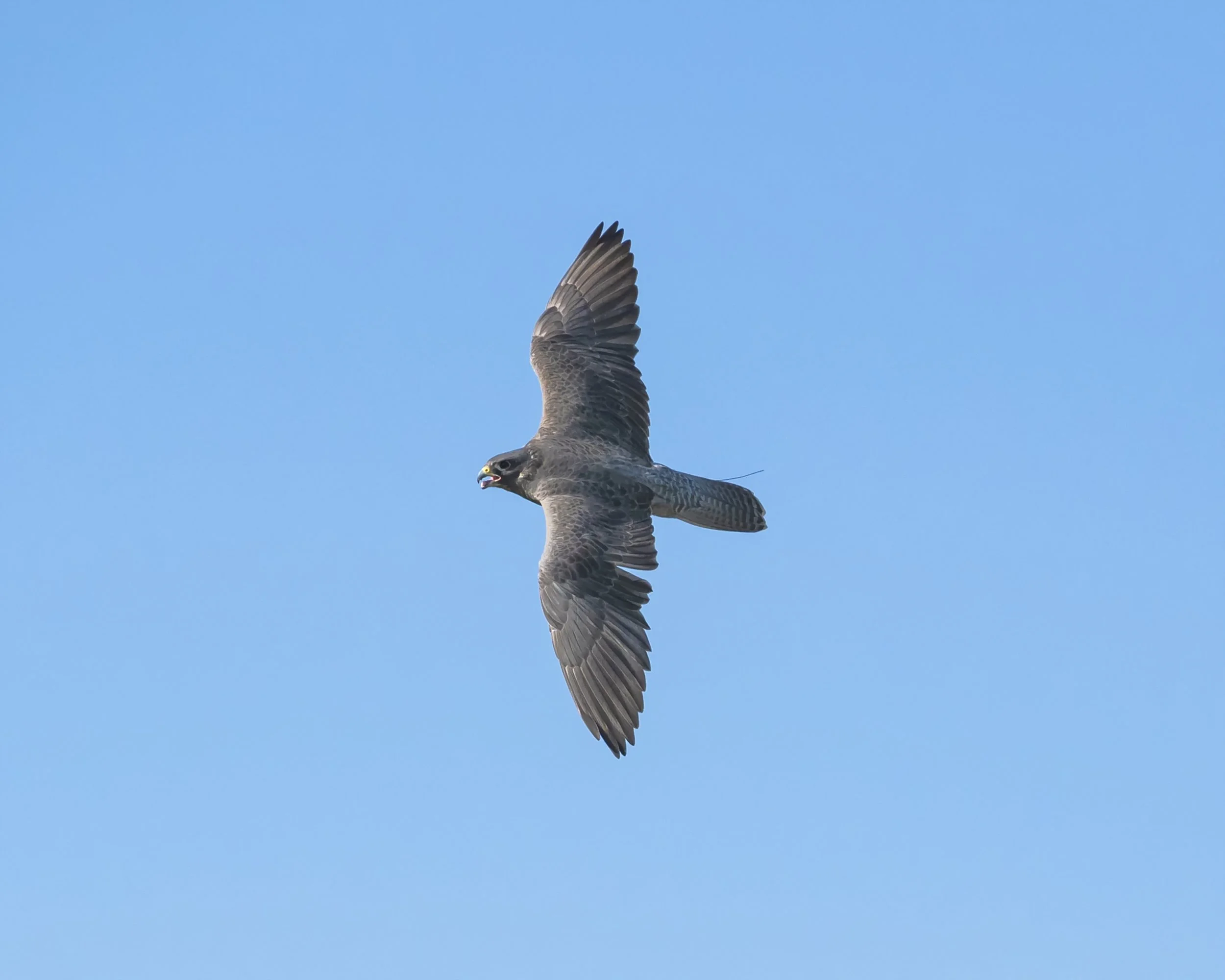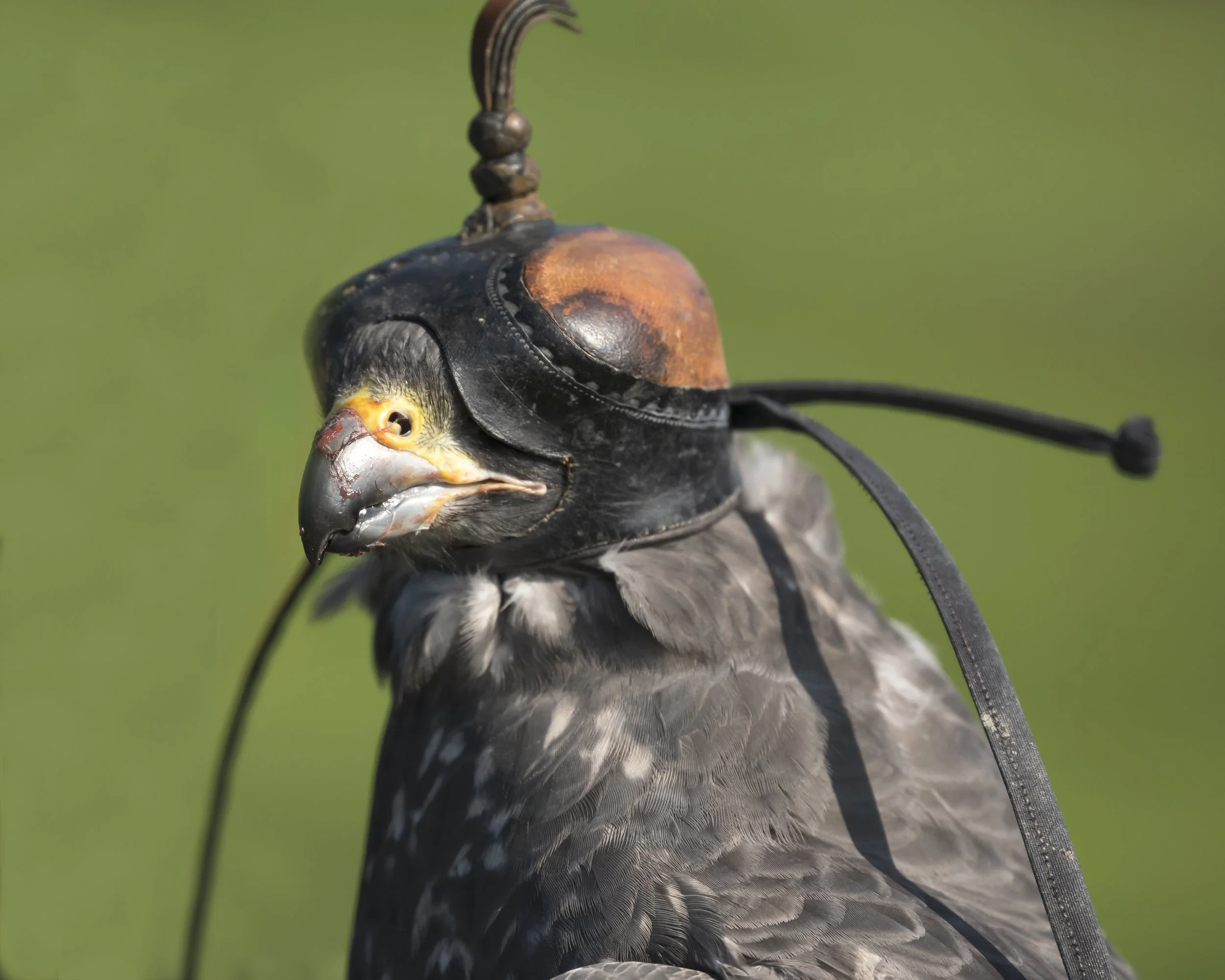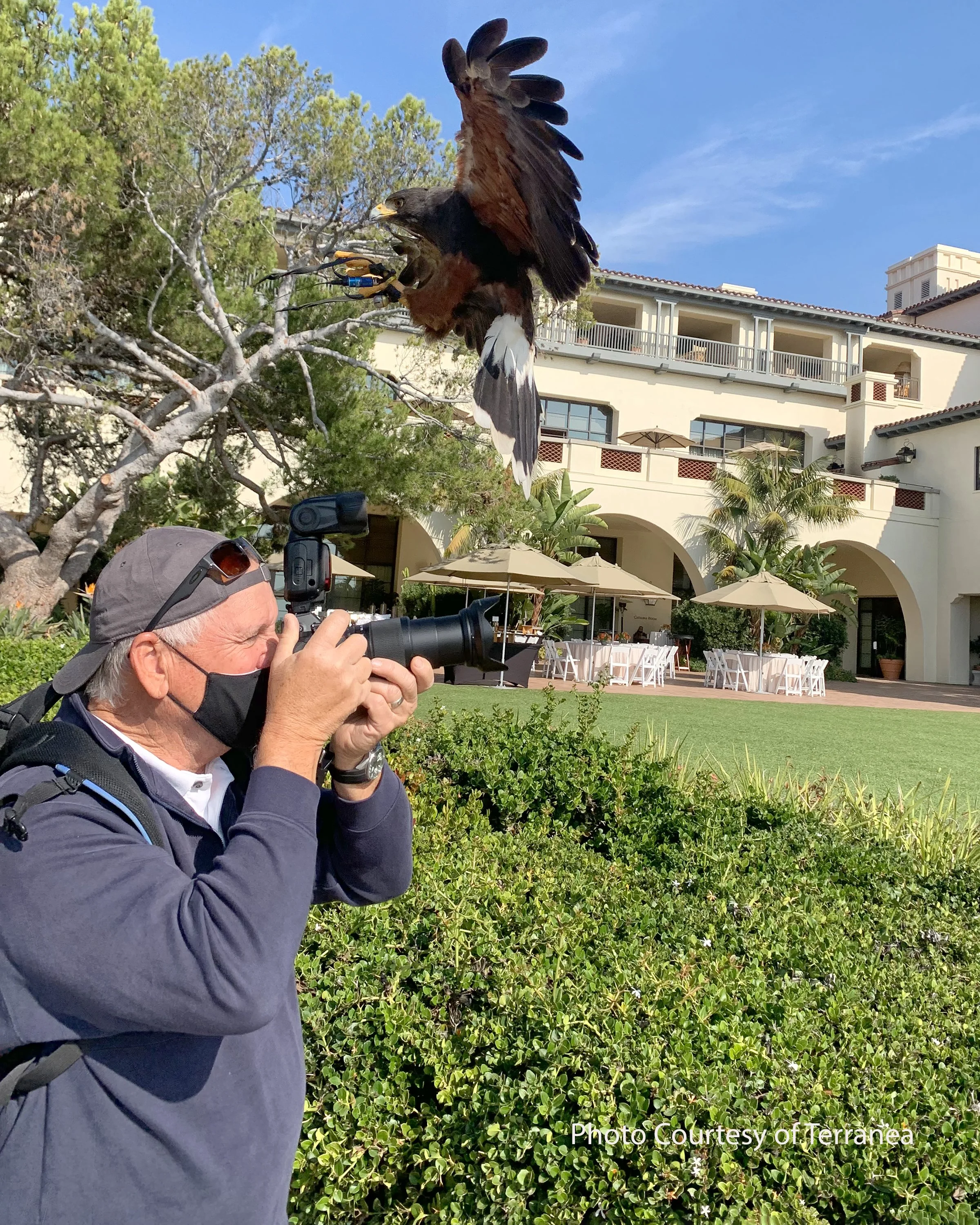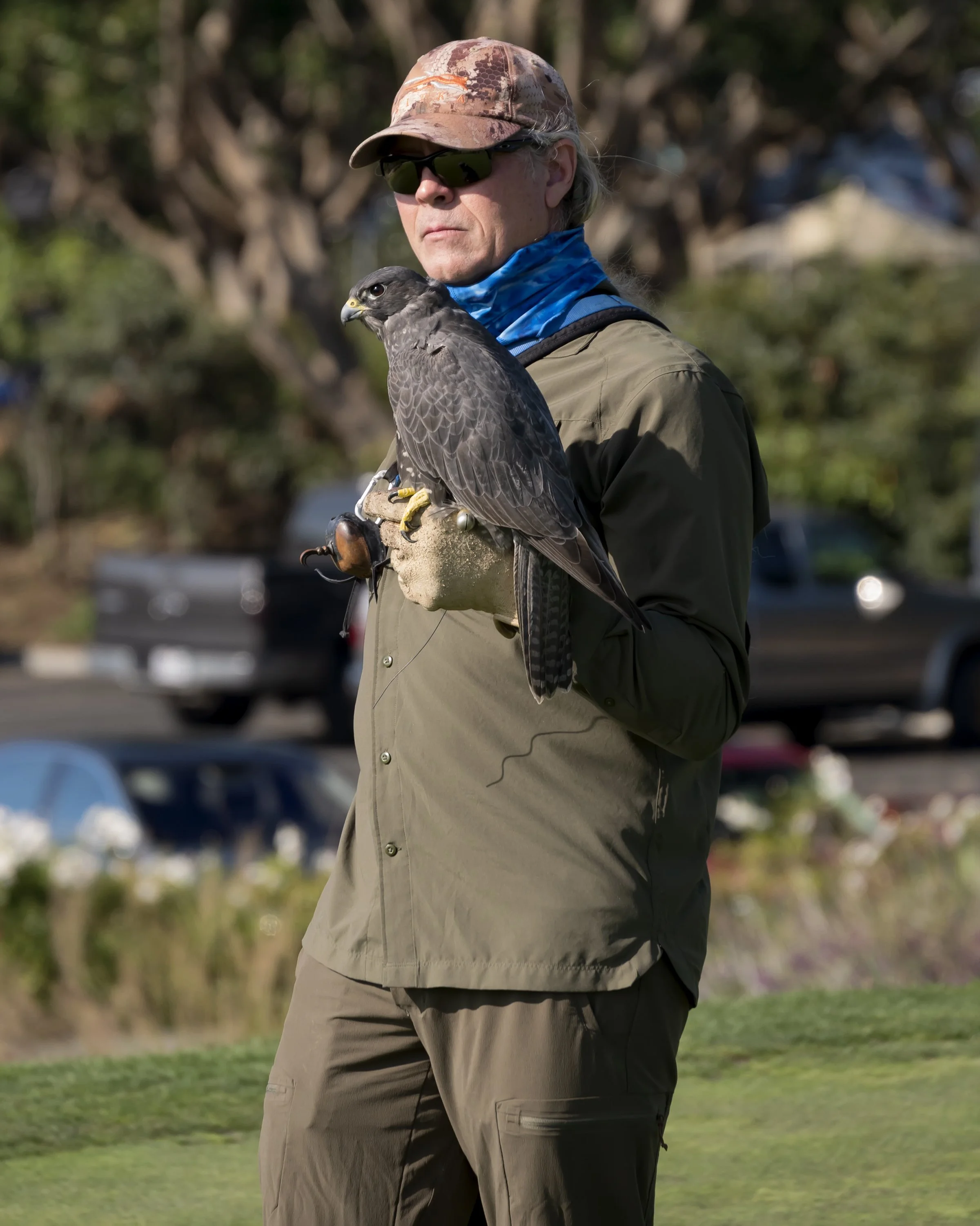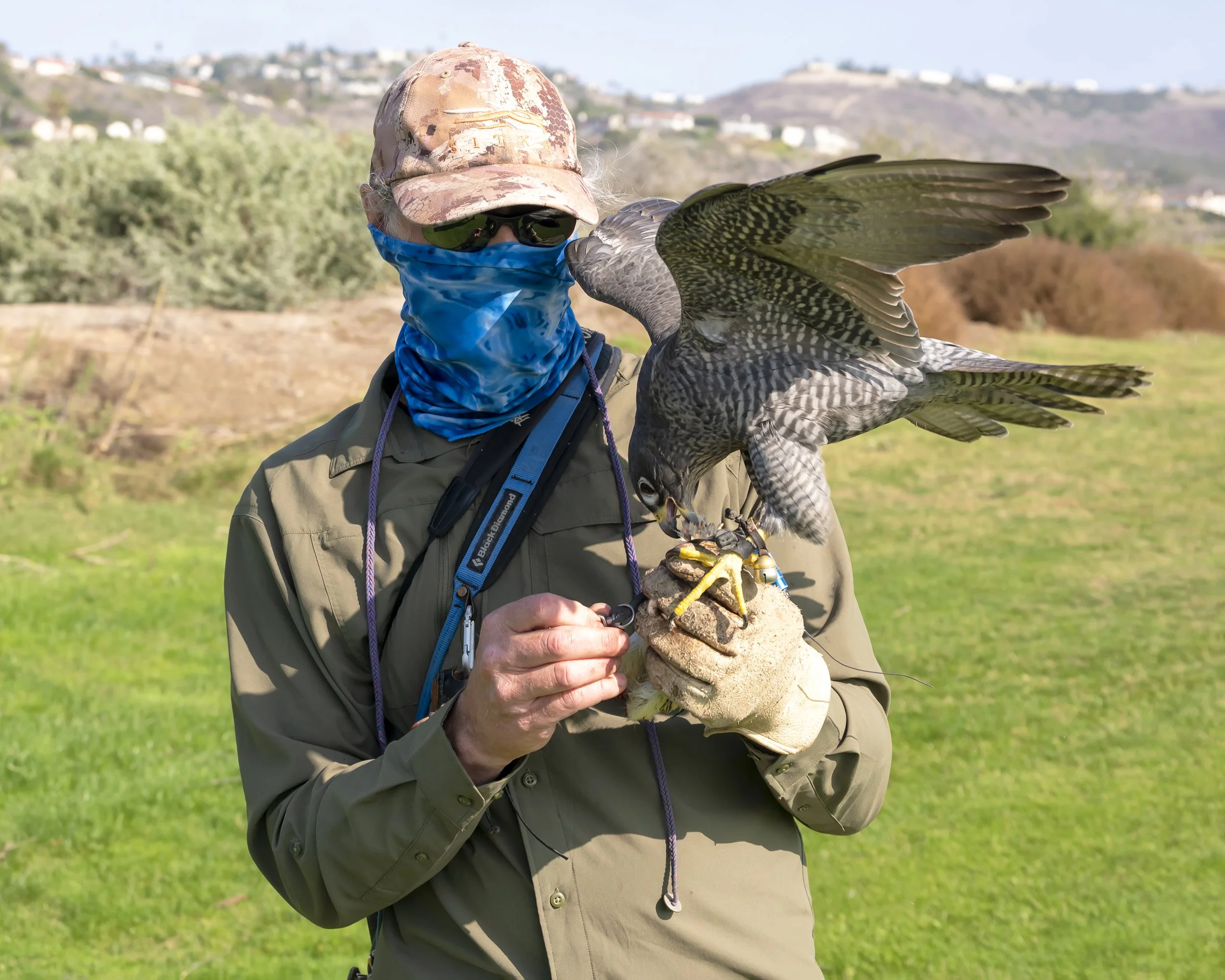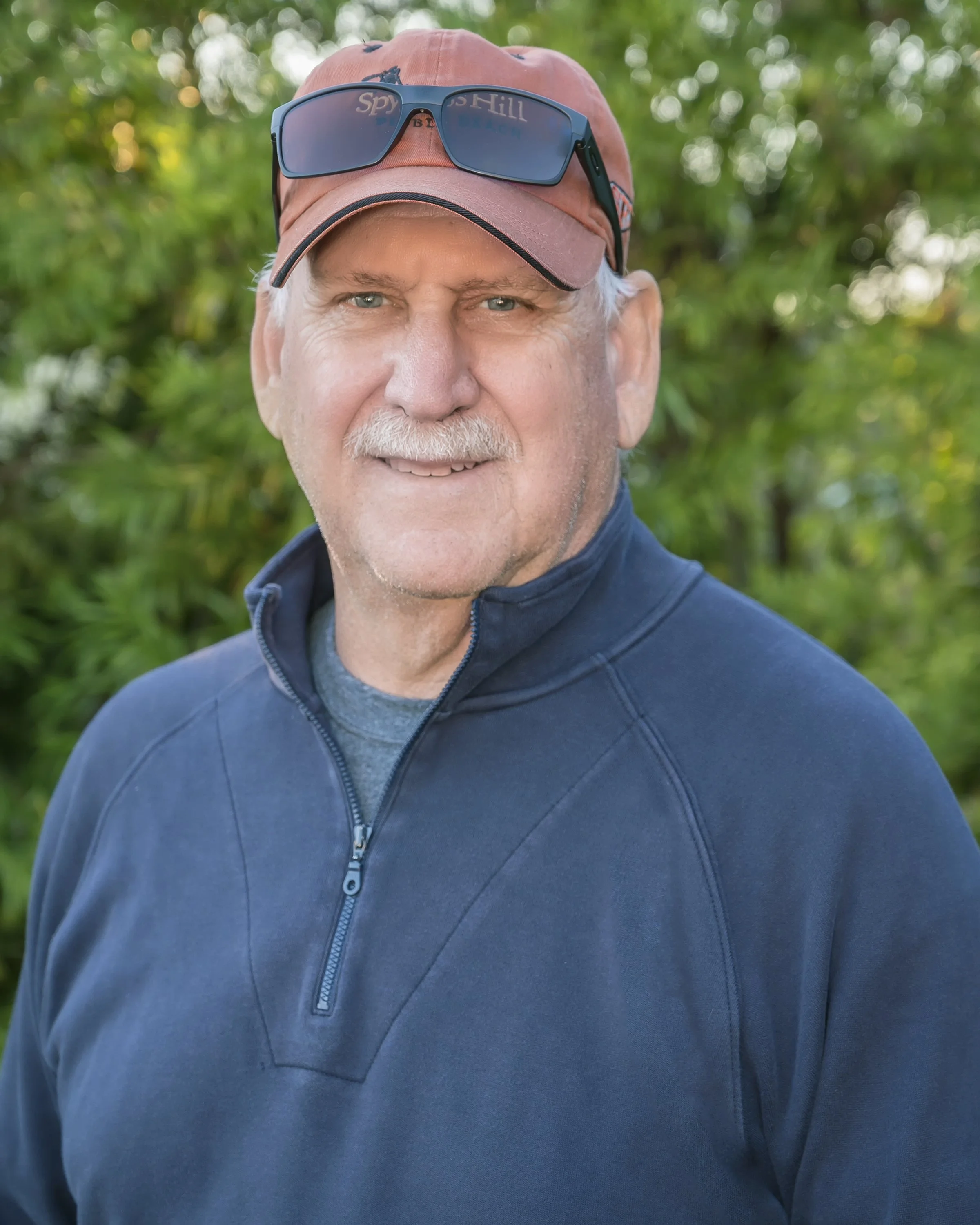Bye, Bye Black Bird and Sea Gulls Too! Terranea Uses Birds of Prey to Enhance the Guests' Experience By Steve Tabor
Bye, Bye Black Bird and Sea Gulls Too! Terranea Uses Birds of Prey to Enhance the Guests’ Experience
By Steve Tabor
Since opening the resort, staff members at Terranea (Resort) have dealt with managing the populations of sea gulls, pigeons, and ravens that have had a negative impact on the Resort’s environment and guests experience. Shortly after opening in 2009, the staff began exploring alternative methods to negate or eliminate the birds’ negative impact on the Resort. One of the former managers shared that one of the resorts at which he worked in the Middle East used birds of prey (raptors), notably falcons, to dissuade the unwanted birds from flying about the property.
After a bit of research, the Resort found a Falconer to begin their experiment. The staff discovered that the raptors did have a positive impact on reducing the unwanted bird population on and around the Resort property. Eventually the original Falconer left the Resort and was replaced by another Falconer. The new Falconer discovered that he needed additional assistance with the program, and hired the Resort’s current falconer, Joe Roy III.
Roy grew up in the City of Thousand Oaks and from the time he was a small boy, he had a passion for handling raptors. Roy indicates, “This passion was fueled by a neighbor whose son was not interested in raptors but found Roy a very eager and willing student.” The neighbor took Roy under his wing, so to speak, and began teaching Roy the art of falconry. As Roy grew older, he began caring for and handling as well as hunting with his own birds. By the time Roy arrived at Terranea, he had over thirty years of knowledge and experience with raptors. Within time, Roy became the Resort’s only Falconer.
One of the unique aspects of Roy’s handling of his birds is unlike most handlers who use a large gauntlet glove, to prevent the bird’s claws, known as talons, from puncturing or scratching the arm and hand of the handler. Roy instead choses to use a smaller leather work glove. Roy stresses that the smaller thinner glover allows him to more easily feel the bird’s feet which gives him a better sense of the bird’s overall demeanor. Roy confesses that he does occasionally receive a puncture wounds and scratch, but the benefits of using the thinner lighter glove far outweigh the negatives.
Roy points out that although falcons and hawks are both considered raptors their strong firm wing structures are similar. However, falcons can easily fly great distances and generate faster speeds than a hawk. In contrast, hawks have extraordinary acceleration, but they cannot generate or maintain the speeds that falcons are able to produce. Because of the difference in their flying abilities, falcons have territories much larger than hawks. Roy indicates that one of his falcons once traveled twenty-six miles before he was able to retrieve the raptor.
Although Roy’s falcons and hawk constantly fly the skies above Terranea, they can, and do sometimes, fly beyond the perimeters of the property. Because of that, prior to releasing any of his raptors, Roy attaches a GPS device on one of the bird’s legs and uses the device to track the bird until it returns to Roy.
At the Resort, Roy flies four falcons: Apex, a one-year-old gyrfalcon and peregrine hybrid; Thor a gyrfalcon and peregrine hybrid; Sammy, a seven-year-old a gyrfalcon and saker hybrid; Sharman, a five-year-old gyrfalcon and peregrine hybrid; and a Harris Hawk, Tomahawk, a tiercel (male). Roy and his birds are on property five days a week. According to Roy, “The falcons’ tremendous flying abilities makes them ideal to guard large portions of the Resort’s property. Just their presence discourages the unwanted birds from entering the Resort’s air space.”
Having multiple falcons allows Roy to rest some of his falcons, while one maintains a vigilante eye above. Their extended presence above the Resort makes it exceedingly difficult for sea gulls, pigeons, and ravens to return to the Resort’s air space. Roy stresses that the falcons and hawks are not used to kill the intruders, “It is illegal to kill sea gulls, but the falcons’ and hawk’s presence is incentive enough for the intruders to leave the area.”
Roy says, “The bird’s presence does not have a negative impact on the overall population of the sea gull, pigeon, or raven population, but they do have an impact on the number of these intruders from flying about the Resort. Having the raptors forces the intruders to find other places to go.”
Roy likens the raptors’ presence to a police officer with a radar-gun. “If you consistently see a cop with a radar-gun on a certain stretch of roadway you regularly travel, you will likely behave accordingly. But, if that cop stops showing up, eventually the fear of being cited will wane and the deterrent will be nullified.”
To demonstrate his point, he noticed there were a murder, or group, of ravens along the cliff line of the property. Once he released one of his falcons, the ravens withdrew to a safer location. He allowed the falcon to circle the property for a brief period before recalling the bird by whistling for him. The falcon returned to Roy’s gloved hand, and he was rewarded with the remains of a quail. Later during our time together, Roy saw the ravens attempting to return to the cliff line, instead of releasing another falcon to intercept the intruders, Roy began using his falcon recall whistle. Just hearing Roy whistle for the winged warrior was enough for the ravens and they left the property’s air space without attempting to verify the presence of the falcon.
Roy indicates that the falcons do have an occasional encounter with peregrine falcons living on the cliffs near the Pt. Vincente Lighthouse. Roy points out these birds are very territorial which leads to some mid-air confrontations, but Roy carefully monitors his birds during these encounters, and recalls his falcons, if the situation becomes too intense.
Roy purchases his birds from breeders in Idaho, Montana, and Wyoming. Roy indicates that most of his falcons have a mixed blood line, but each bird has a primary bloodline providing most of its dominate traits and minor blood line providing secondary traits. When he receives the birds, he begins the training process which usually takes less than a month. The training is based on a positive reinforcement food system. Roy indicates that it is important that the birds are hungry before they set out on their duties. This encourages them to perform their duties, knowing that they are rewarded with a meal when they return afterward. Roy feeds his birds restaurant quality quail or other appropriate fare to maintain their good health. He also carefully monitors the number of calories each bird consumes throughout the day and their weight along with their general health condition.
In addition to the falcons, Roy uses a Harris Hawk to assist removing unwanted birds from the rooftops, balconies, and other areas of the Resort. Unlike the falcons, Roy freely walks about the property including the lobby and pool area with his hawk. Roy releases the hawk as he strolls through the property. The goal is to have the hawk reach the rooftop, however, enroute the hawk will stop on balconies, railings, and patios along the way. If the hawk returns to Roy’s hand prior to reaching the rooftop, the reward is withheld. If the hawk reaches the rooftop, it is appropriately rewarded with a tasty treat. Like the falcons, the hawk’s presence is motivation alone for the unwanted winged guests to vacate the property and look for other accommodations.
Roy has numerous stories about guests encountering the hawk on their balconies. He reports some are quite relaxed around the bird, but others are a bit more skittish about their encounter. Some slightly open the door or the window curtains and extend their cell phone out to take a quick snapshot.
In addition to the falcons and hawk, Roy owns a Eurasian Owl, Owlbert, that he has raised since he was three to four days old. This has allowed Roy to become imprinted on the owl. In other words, the owl associates Roy as his parent figure. The imprinting allows Roy to develop a more in-depth relationship and level of trust with the owl. As a result, Roy feels confident about allowing other individuals to handle the owl, something he definitely does not do with the falcons or the hawk. In fact, during the falconry experience, Roy encourages guests to hold the owl and feel its feathers.
Roy states that owls rely on their stealth abilities to find their prey. Lacking the speed of a falcon or the rapid acceleration of a hawk, owls use the cloak of darkness to hunt their prey. Their smooth feathers allow owls to fly silently and often are not heard by their prey until it is too late. Lastly, unlike a falcon’s or hawk’s sharp vision, owls have poor vision, but their heightened sense of hearing allows them to hear prey running along the ground even under the cover of snow. Their right and left ears are slightly offset. The offset performs like a dolphin’s sonar as they seek food. The difference in the time the sound reaches each ear allows the owl to focus on the prey’s location. Once the location of the prey is acquired, the owl swoops down and grabs the prey in its talons.
Flyby video courtesy of Terranea
Roy stresses that when he and his birds are not working at the Resort, he hunts with his birds in the wilds of the Northwest. Roy adds their work at the Resort, often mimics the hunting behavior.
In addition to their daily resort duties, Roy and his birds of prey are the stars of an Experience presented at Terranea. Roy remarks, “In 1972 the production of DDT was halted. However, the ill effects of its offshore dumping and storm runoff impacted the abilities of raptors and other birds to reproduce. As a result, these winged creatures all but disappeared from the Peninsula. Today, we are seeing an increase in the number of raptors and other birds flying around the Resort and the Peninsula.” Roy suggests that in addition to looking at the coastline and the waters between Catalina searching for sea life, check the skies above and the trees around for the variety of raptors large and small, as well as other birds that are now a part of our landscape.
Video Hawk courtesy of Terranea
During the Encounter, Roy educates his audience about his raptors, their duties on the property and how this relates to their natural behaviors. Guests will also have an opportunity to stroll along the grounds with Roy and the hawk as they perform their duties. The 90-minute program costs $135.00 per person with a two-person minimum. Children under five years of age are free, but it is not recommended for infants or toddlers.
The Encounter is open to resort guests as well as non-resort guests and advanced reservations are recommended. For additional information about the program visit:
https://www.terranea.com/experiences/the-experience-center/aqua-terra-art-adventures
Steve Tabor Bio
This South Bay native’s photographic journey began after receiving his first 35 mm film camera upon earning his Bachelor of Arts degree. Steve began with photographing coastal landscapes and marine life. As a classroom teacher he used photography to share the world and his experiences with his students. Steve has expanded his photographic talents to include portraits and group photography, special event photography as well as live performance and athletics. Steve serves as a volunteer ranger for the Catalina Island Conservancy and uses this opportunity to document the flora and fauna of the island’s interior as well as photograph special events and activities.
Watch for Steve Tabor Images on the worldwide web.
Related Articles


